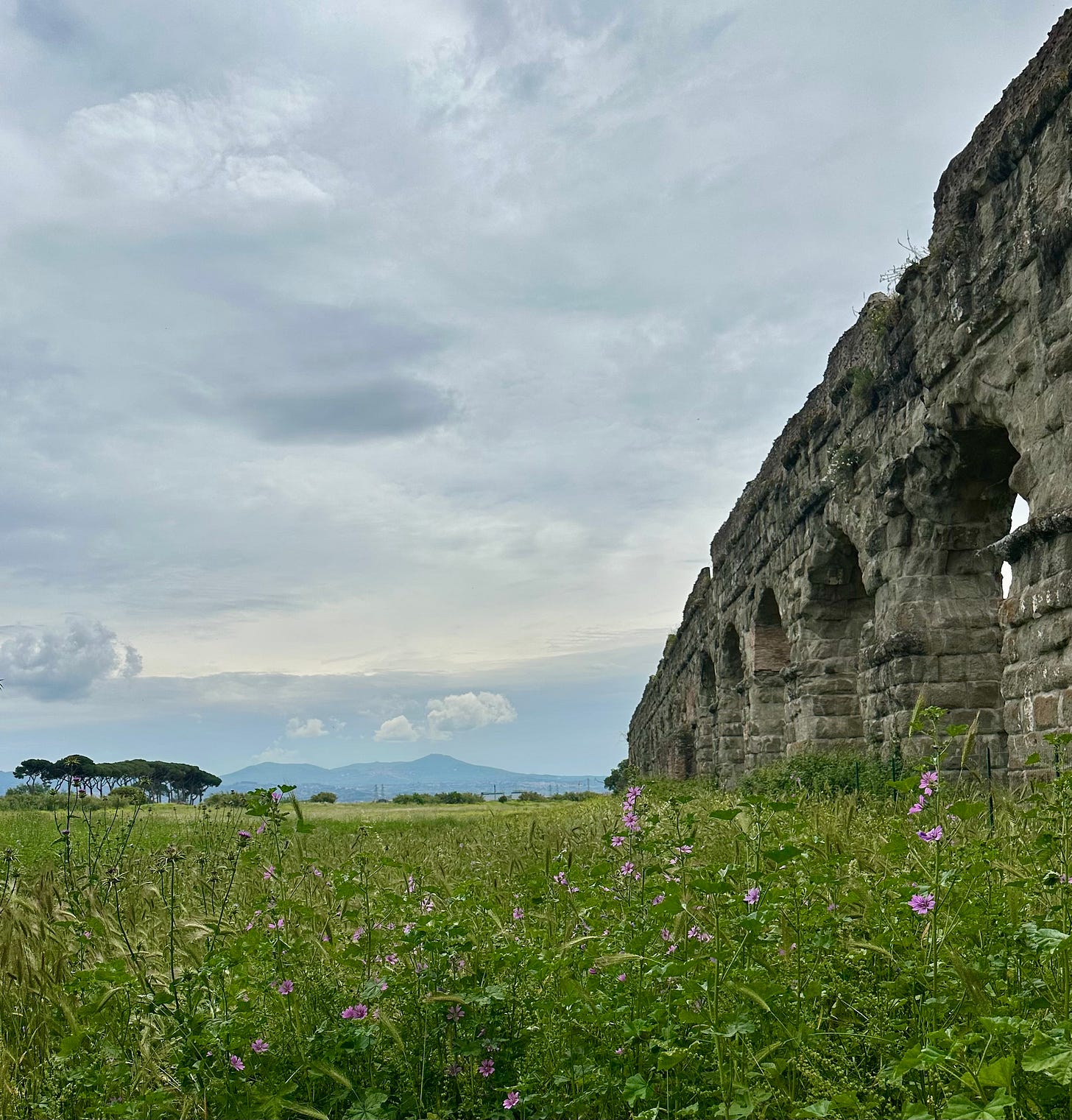Some of my favourite views of Rome
8: Parco degli Acquedotti
I have a particular penchant for Roman aqueducts, after all without them none of the rest of Rome’s glories would have come into being. One of my all-time favourite views, anywhere, is this one looking down the Claudian Aqueduct to the Alban Hills.
It is redolent of both myth and mathematics; that fabulous fusion of hazy legend and down-to-earth pragmatism that makes Rome so appealing. Those volcanic hills looming in the distance are the Alban Hills. Legendarily they are the birthplace of Romulus and Remus, but very much non-legendarily they are also the source of the lava flow which would become the first stretch of the Appian Way and of the springs which, in 312 BCE, would feed Rome’s first aqueduct over three centuries before the arches in the photo were built. How did the Romans build such good aqueducts? They practised for three hundred and more years.
Sustaining the ancient city’s peak population of over a million people required a lot of fresh water—estimates suggest a cubic metre (about 250 US gallons) per person, per day. Two thousand years ago. That’s a higher per capita water supply than any other city; anywhere, ever. Without all of that water there would have been no vast metropolis; no Colosseum, nor Pantheon.
Keep reading with a 7-day free trial
Subscribe to Understanding Rome's Newsletter to keep reading this post and get 7 days of free access to the full post archives.


